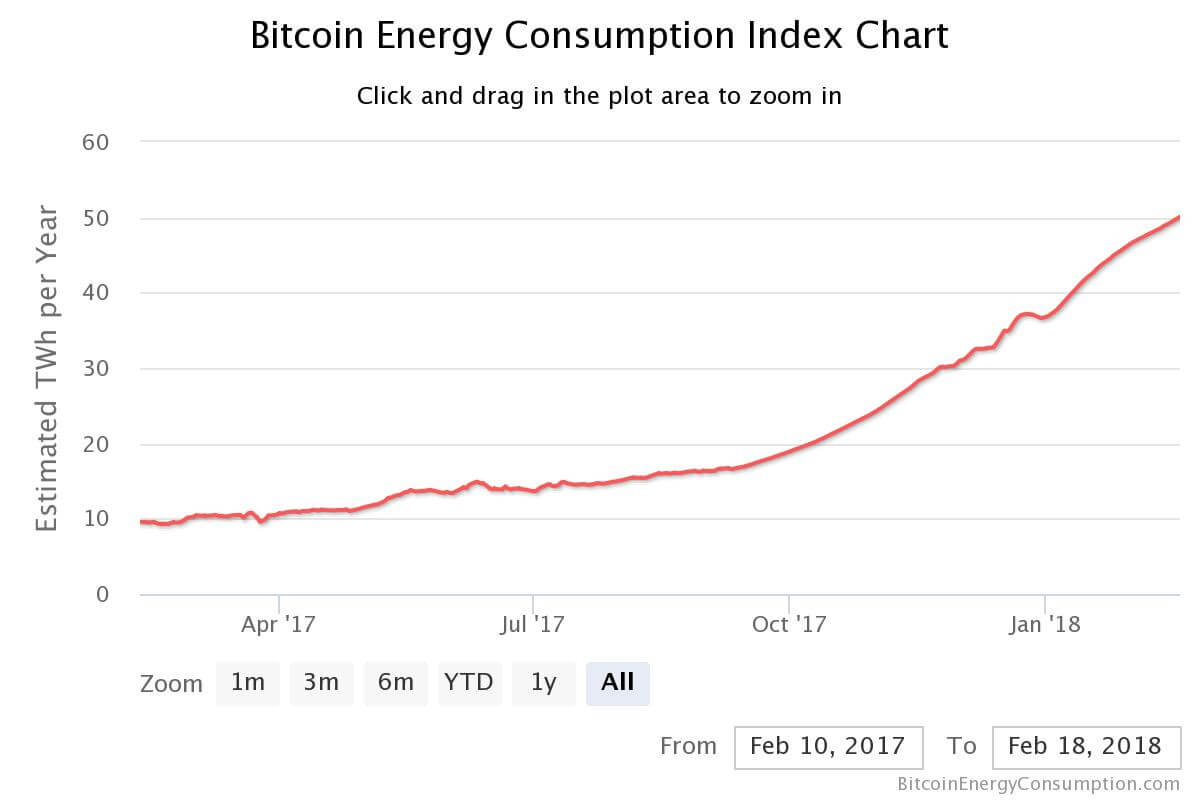Introduction
Bitcoin, the cryptocurrency par excellence, has some special characteristics that justify the accelerated race to dominate the mining industry.
When Satoshi Nakamoto published the white paper on October 31, 2008, he laid out critical conditions for the future of the coin.
The most-significant characteristic that is intrinsic to Bitcoin is its scarcity. The supply would be limited to 21 million Bitcoins. The difficulty in mining BTC would increase and the reward would decrease steadily over time.
By imposing these conditions, Satoshi Nakamoto intended to emulate the processes of extracting scarce materials throughout history.
A brief history of commodity mining
History shows us that at the beginning of any type of exploitation, obtaining the reward is relatively straightforward.
In the next stage, the low-hanging fruit is exhausted. Moreover, competition – triggered by the news of simple extraction – intensifies the race. The presence of additional exploiters ends faster with the next phase of exploitation.
In the third stage of exploitation, the effort further advances, and there is even more competition for the reward and the product is rapidly scarce.
As a clear example, we can mention gold, which in Roman times was extracted in small open-cast mines, merely several meters deep. Today, the deepest mine in the world is more than 3.5 km beneath the earth's crust.
Infrastructure
When Satoshi Nakamoto gave birth to Bitcoin, a personal computer was enough to mine it, though not that simple. However, with time and dedication, a miner could extract what would be a fortune today.
Nowadays, any attempt to do something similar is virtually impossible. Large mining facilities – remotely located for reasons such as cold weather and lower energy costs – leave a personal desktop computer far behind.
On November 5, we have learned about the construction of the largest mining facility in the world. Led by a company called Whinstone and with facilities in Holland, Sweden, and the US, the facility is built in Rockdale, Milam County, Texas.
The project has a budget of $150 million and would employ more than 150 people.

Bitcoin Mining: Profitability
A computing unit, electricity, and an internet connection are needed to mine Bitcoin.
Miners cost between $1,200 and $2,000 and must be renewed periodically to remain competitive. The Bitcoin algorithm guarantees this competition.
The difficulty is automatically adjusted to meet the rule of rewarding only 1 Bitcoin every 10 minutes – regardless of the computing power.
Miners consume a considerable amount of energy and generate substantial heat – which if not cooled down – can sink the performance and even melt the device.

Source:BitcoinEnergyConsumption.com
The geographical location of the installation is key to ensuring profitability. A next-generation miner like the Antminer S17 Pro costs around $2,400 with a capacity of 60 Terahashes. Taking full advantage of its potential, it consumes about 2,600 W/h.
The table below demonstrates the electricity costs and benefits:
| COUNTRY | AVERAGE KWh/$ (2018) | ANUAL REWARD (POOL FEE 1%) |
|---|---|---|
| GERMANY | 0.33 | -$3,806 |
| AUSTRIA | 0.23 | -$1,528 |
| FRANCE | 0.19 | -$617 |
| TURKEY | 0.15 | +$293 |
| UNITED STATES | 0.13 | +$749 |
| CANADA | 0.11 | +$1,204 |
| CHINA | 0.08 | +$1,887 |
| ARGENTINA | 0.01 | +$3,482 |
The halving event and its impact on Bitcoin mining
In May 2020, approximately on the 14th, miners, traders, investors, and HODLers all await what may be the most important event for the Bitcoin ecosystem: the 2020 halving.
Currently, Bitcoin mining results in 12.5 BTCs created every ten minutes – including the production time of each new block in the chain). That represents 1,800 BTCs per day. When the next halving occurs, in May 2020, the reward will be halved and will deliver around 6.5 BTC every ten minutes, which amounts to 900 BTC per day.
Bitcoin supply per year is reduced by 328,000 BTC. According to the schedule, there are 30 Blockchain halving events left until the creation of the last block. The last new Bitcoin will likely be mined around 2140.
Source:BraveNewCoinIndex
The impact of halving on the price of the BTC
Historically, every time a rewarding halving event has occurred, the price of Bitcoin has increased.
Each rally has so far compensated for the loss of economic performance suffered by the miners.
It is impossible to predict how the price will behave once the next event occurs. The historical series shows us how after the halving of November 28, 2012, prices frog-leaped by 9,218.6% within a year. In the next such event on July 9, 2016, Bitcoin’s value surged by 2,938% after 525 days.
Following a linear logic, we can expect that after the next halving, there is a high probability of seeing a price increase of around 900% within a time horizon of a couple of years.
The projection of this statistical pattern indicates – as a probable scenario – a value of around $100,000 for one BTC in the summer of 2022.
Here are two theories about the casuistry that hides behind such Bitcoin riches after each halving.
- Law of supply and demand
Each halving reduces the supply of new Bitcoins to the market. If demand remains constant, but supply drops by 50%, then the price will tend to rise to balance the price formation structure.
- The predictability of halving
Contrary to any other commodity, it is possible to know when and under what conditions a halving will occur and how it will affect the supply of new Bitcoins. It is also feasible to project future mining costs under the new reward conditions.
Under these premises, we can think that the investments made in the mining industry will adjust their investment according to the environment and the expected changes.
The data show that the installed calculation power does not decrease after the halving event, which could mean that miners are trying to maintain or even increase their hash rate/BTC reward ratio.
The miners planning when to renew equipment or looking for more profitable sites must take into account the halving event in order to stay in the market.

Information on these pages contains forward-looking statements that involve risks and uncertainties. Markets and instruments profiled on this page are for informational purposes only and should not in any way come across as a recommendation to buy or sell in these assets. You should do your own thorough research before making any investment decisions. FXStreet does not in any way guarantee that this information is free from mistakes, errors, or material misstatements. It also does not guarantee that this information is of a timely nature. Investing in Open Markets involves a great deal of risk, including the loss of all or a portion of your investment, as well as emotional distress. All risks, losses and costs associated with investing, including total loss of principal, are your responsibility. The views and opinions expressed in this article are those of the authors and do not necessarily reflect the official policy or position of FXStreet nor its advertisers. The author will not be held responsible for information that is found at the end of links posted on this page.
If not otherwise explicitly mentioned in the body of the article, at the time of writing, the author has no position in any stock mentioned in this article and no business relationship with any company mentioned. The author has not received compensation for writing this article, other than from FXStreet.
FXStreet and the author do not provide personalized recommendations. The author makes no representations as to the accuracy, completeness, or suitability of this information. FXStreet and the author will not be liable for any errors, omissions or any losses, injuries or damages arising from this information and its display or use. Errors and omissions excepted.
The author and FXStreet are not registered investment advisors and nothing in this article is intended to be investment advice.
Recommended Content
Editors’ Picks
SEC doubles down on TRON's Justin Sun lawsuit dismissing claims over jurisdiction

The SEC says it has jurisdiction to bring Justin Sun to court as he traveled extensively to the US. Sun asked to dismiss the suit, arguing that the SEC was targeting actions taken outside the US.
XRP fails to break past $0.50, posting 20% weekly losses

XRP trades range-bound below $0.50 for a sixth consecutive day, accumulating 20% losses in the last seven days. Ripple is expected to file its response to the SEC’s remedies-related opening brief by April 22.
ImmutableX extends recovery despite $69 million IMX token unlock

ImmutableX unlocked 34.19 million IMX tokens worth over $69 million early on Friday. IMX circulating supply increased over 2% following the unlock. The Layer 2 blockchain token’s price added nearly 3% to its value on April 19.
Bitcoin Weekly Forecast: BTC post-halving rally could be partially priced in Premium

Bitcoin price briefly slipped below the $60,000 level for the last three days, attracting buyers in this area as the fourth BTC halving is due in a few hours. Is the halving priced in for Bitcoin? Or will the pioneer crypto note more gains in the coming days?
Bitcoin: BTC post-halving rally could be partially priced in Premium

Bitcoin (BTC) price briefly slipped below the $60,000 level for the last three days, attracting buyers in this area as the fourth BTC halving is due in a few hours. Is the halving priced in for Bitcoin? Or will the pioneer crypto note more gains in the coming days?